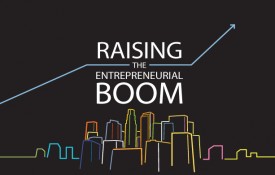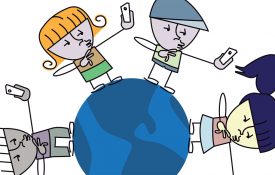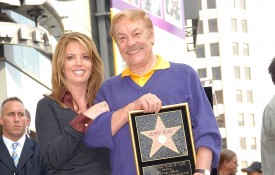When a vicious fire encircled the Ronald Reagan Presidential Library and Museum in fall 2019, it seemed to be the greatest crisis I might ever face as executive director of the Reagan Foundation. Little did I know that the COVID-19 would give that fire a run for its money.
The past year has threatened not just America’s physical, mental, and economic health, but our social, historical, and cultural institutions as well. The Reagan Library—the largest and most visited of all the presidential libraries—like scores of other museums, galleries, foundations, and libraries across the nation, have had to bar their doors to visitors, members, supporters, and donors for an entire year. For many, the damage may prove lasting: When surveyed in fall 2020, more than half of American museums held less than six months of operating reserves, and nearly one-third acknowledged a risk of permanent closure.
We are placing particular emphasis on ensuring that our education programs and curricula are accessible and scalable, whether delivered in the classroom at school or in the home.
The Reagan Library, thankfully, is pulling through, anxious to reopen and planning to come back better than ever. How have we survived? We learned several lessons, ones that I’m sure many nonprofits like our own have had to learn, and found new paths to engage visitors—even when they could not be here in-person.
The beginning of the pandemic was the most painful. The Reagan Library had been closed several times before due to federal government shutdowns. We don’t receive federal funds, but because President Reagan’s papers are stored in our library, and those papers are the property of the U.S. Government, we have had to cease operations on rare occasions in the past. But when that has occurred, we were impacted for only several weeks. When our closure due to the pandemic stretched into months, it got ugly. For every week we remained closed, we lost about $150,000 in revenue from foregone admissions, concessions, events, and other on-site sales. And the focus of donors, for obvious reasons, was on supporting more timely causes critical to pandemic relief.
Working through a new patchwork of virtual offerings, our team quickly dialed in on a mission to reach and stay engaged with our supporters at every level. America was tuning in. By quickly developing or honing creative digital strategies to replace “analog” programs our visitors once enjoyed in-person and on-site, we found we were able to ultimately reach interested audiences 10 times or even 100 times greater than we had seen before. Our routine of hosting two on-stage conversations each month with visiting dignitaries, lawmakers, media personalities, authors, and entertainers was soon replaced by two or three virtual events every week.
While the Reagan Library’s famous auditorium and Air Force One Pavilion are magnificent venues from which to host such events, they can only accommodate so many. Now, through our investment in some digital technologies and the building of related skill sets, events that once attracted hundreds or a thousand visitors are now, and more often, garnering tens of thousands of views. Our traditional event to celebrate July 4 has normally attracted 3,500 to 4,000 participants each year. This past July 4, our virtual event drew 40,000 who tuned in from all over. A conversation I held with Greg Gutfeld of Fox News (The Five) fame attracted 789,000. An interview with activist Candace Owens drew 35,000. Virtual field trips for students have been a success as well—giving students from around the country, not just L.A., an immersive, educational look into the world of government, media, and, of course, Ronald Reagan.
In addition to converting existing events to fit a virtual stage, we sought to increase our overall digital presence in new ways. We invested in smarter ways to build our brand through social media and have seen tremendous growth in those channels, suggesting latent potential into new and younger audiences that awaited us. Our YouTube channel has doubled its subscribers, our Facebook and Instagram accounts have grown by 30%, and our engagements with many more supporters have never been stronger.
Much of this growth stems from new and creative ways we discovered—often through trial and error—to share content, such as live videos from our campus, virtual “private” tours of the library and museum, and glimpses of museum artifacts from the Reagan years that are on hand but rarely if ever seen due to space considerations. In line with our mission to promote President Reagan’s goal of creating “informed patriots” among the ranks of younger generations today, we have sped up the conversion of our education programs in the virtual learning space to help create the citizen leaders of tomorrow. We are placing particular emphasis on ensuring that our education programs and curricula are accessible and scalable, whether delivered in the classroom at school or in the home. Our national high school debate competition, for instance, which formerly took place in person in numerous regions around the country, is now held online. It’s attracting far more students and allowing greater numbers of participants to compete, regardless of their geographic circumstances, and gain valuable experience.
Our willingness to listen, change, examine past practices, and experiment with new technologies and new approaches in order to reach new “customers” interested in becoming the informed patriots President Reagan challenged us all to be remains strong. Our optimistic attitude, learned from our namesake, has spurred generosity from our donors during these difficult times and kept us on a stable financial footing. In hard times, people are eager to build a better future.
While we anxiously await the day that California recovers and visitors return to our doorstep, we are doing all that we can to ready ourselves to hit the ground running upon reopening. Until then, we’re implementing all the virus safety measures the public deserves—from social-distancing requirements and stepped-up sanitization measures, to improved HVAC systems, mandatory online ticket ordering, and completion of long-needed repairs and renovations made possible while our doors are closed.
Despite a “lost” year due to closure, I’m certain the Reagan Library will return stronger than ever, with broader reach than ever before. If important institutions like our own across the nation have taken this opportunity to do the same, all of us will benefit and have much to look forward to in the months ahead. President Reagan always believed in innovation and ingenuity, and that’s how the Reagan Library thrived during this pandemic. It’s the American way.













































